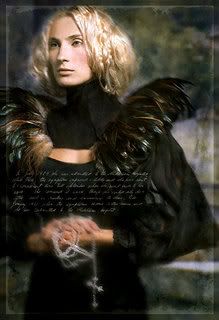
When I fist heard about the new line by Chanel, officially termed Les Exclusifs, or affectionately termed Les Prétentieux, the one which I was most in anticipation of was no.18. Named after the number of the Chanel fine jewelry boutique at Place Vendôme it is a scent based on ambrette seed , a vegetal and very costly ingredient that natural perfumers use for substituting real and synthetic musk in their perfumes.
I had envisioned a whole scenario of soft smooth aromas in my mind, lured by the promise of musk that is one of my top favourite notes in creation in most of its nuances and incarnations. Not even the prophet Muhhamad has been so entranced by the promise of musk as I have!
However my impression of ambrette seed largely derives from the oil distilled and the absolute used in perfumes which I have had the rare pleasure of smelling and not the unshelled variety of the seed which I later found out goes into the production of no.18.
Hibiscus Abelmuschus, aka ambrette seed, is a plant of the hibiscus family whose names derives from the Greek ibis (a kind of bird that supposedly eats it) and the Arabic Kabbel-Misk (which means grain of musk). Usually the seeds of the plant when they “hatch” are pressed for their precious oil which takes on a soft, sweetish, skin-like aroma. According to Mandy Aftel the smell is sweet, rich, floral and musky all at once.
Imagine my surprise and dare I say a little disillusionment when I actually got my decant and sprayed the precious juice on my skin. An acrid, pungent smell first hit me that was not the richness and powderiness I anticipated so eagerly.
In fact it reminded me of an anecdotal story I want to share with you. While still little I had a penchant for mixing brews and potions and generally messing with spices, aromas, pomades and yes, perfumes. I found the whole concept of it fascinating and wanted to see how different smells could be combined and nuanced. Spices and cooking are a logical introduction and having been blessed with a mother who cooked well and kept a lot of interesting stuff in the kitchen cupboards I took them out one by one and started experimenting. Once it was the cloves: crushing them, then burning them (they do produce a different, very smoky aromatic sweet smell when burned). Then the pimento and saffron: experimenting with boiling them or immersing them in oil like I had seen women do with basil, rosemary and thyme for aromatizing olive oil (and yes, this is a valid practice that produces mouthwatering results). The stage that really did me in was mace. It was a spice I loved sprinkled on creams and cookies and in meat dishes. It gave a rich oriental, middle-eastern flavour to everything and I loved its ambience. Little did I know that upon burning the unshelled nut in the fireplace (which is quite a hard light brown one) the pungent smell would pervade the house to a point of suffocation and produce fumes that would take eons to clear out rendering my parents furious at me and me nauseous of that smell for life.
Sadly, it was that bitter childhood memory that the initial impression of burned pickles emanating from my no.18 sprayer produced in me. Of course I might be exaggerating because the effect is not nearly as strong as all that, although the whole scent is obviously orchestrated around the solo violin player of ambrette seed, there is no doubt about that.
The effect is certainly not ordinary at all and it only bears a slight resemblance to some oudh fragrances I have smelled and the likeable weirdness of Timbuktu by L’artisan Parfumeur.
Maybe this is an omphaloscopic post and I am analyzing this too much. The point is this medicinal, strange element deterred me from appreciating the full spectrum and possible beauty of no.18. I braced myself for the development, which soon came in the form of sweetish woody and fruity notes of a non-descript nature that in my humble opinion deter from the more daring opening that although repulsive to me personally due to the associations might be a strong pull to people who are interested in the adventurous, distinctive and different. The base is also a little synthetic smelling as if the natural aspect of ambrette seed is anchored with materials invented wearing a white robe, which is a bit antithetical to the promise of a rich vegetal smell.
The modernization of the concept so that it would not recall a natural artisanal perfume, but one issued by a pedigree great house does not work to its favour I think.
Jacques Polge has revealed in an interview that this is his favourite of the line-up and I can see how a person who doesn’t like oakmoss (as discussed before) and is an oriental lover would prefer this. It is certainly the most innovative of the lot and I dearly wish I had the virginal mental and olfactory make-up to really appreciate no.18. As it is, I am unfortunately unable to. It would be like uprooting a mighty tree out of my brain.
Art photography by Chris Borgman courtesy of his site.
.jpg)








